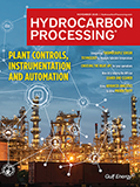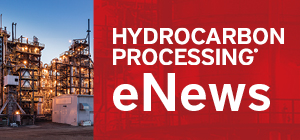Safety
Engineering Case Histories: Case 115: A method for analyzing catastrophic type failures
A portion of my consulting career involved investigating catastrophic type failures on machines, pressure vessels and structures in the industry.
Editorial Comment: Adoption of digital technologies is a mainstay in the HPI
A few years ago, <i>Hydrocarbon Processing</i> started to include digital technologies in its monthly article focus.
Are hot pipes and equipment surfaces ignition sources in the HPI?
Most international and national standards used in the hydrocarbon processing industry (HPI) for conducting hazardous area classification do not provide any guidance or recommendation for non-electrical equipment, such as hot pipe and equipment surfaces, that can act as ignition sources.
HP Flashback: Advancing processing technologies and refining operations: Excerpts from the 1920s
The following is a mixture of technical articles, columns and headlines published in the 1920s by <i>The Refiner and Natural Gasoline Manufacturer</i>, the forerunner to <i>Hydrocarbon Processing</i>.
Editorial Comment: Past, present and future: Hydrocarbon Processing celebrates 100 yr of publishing
It is my esteemed honor to announce that <i>Hydrocarbon Processing</i> is entering its centennial year of publishing.
Reliability: Disregarding storage preservation has consequences
As a rule, equipment to be installed at a plant site initially arrives at an outdoor storage yard.
Business Trends: Executives’ focus on lean management leaves companies exposed to risk during crises
In the wake of an extraordinary year marred by the impact of the COVID-19 pandemic, the author’s company released the results of its 2021 Operational Risk Management Survey<sup>1</sup> of executives, a barometer of the topics that dominate boardroom discussions around the world.
Assessment of independent protection layers in an LOPA study—Part 2
Industrial facilities, especially those operating in the chemical, oil and gas and petroleum industries, contain inherent risks in operations due to the processing of materials that are hazardous in nature.
Safety and environmental benefits of reliability engineering
When you boil down the mission of reliability to its bare essence, the job is to deliver maximum operational availability for the least amount of money over the lifecycle of the asset.
Consequence modeling and risk analysis for safeguarding against jet fires
Due to their high momentum and erosive nature, sustained jet fires are one of the most hazardous types of fires that can threaten the integrity of process facilities.

- ITT to acquire SPX Flow for > $4.77 B, expanding leadership in highly engineered components and adjacent flow technologies 12/5
- MOL Group introduces eco-friendly Bag-in-Box packaging for lubricants 12/5
- Addis Energy secures $8.3 MM to scale its transformative approach to low-cost ammonia production 12/5
- World Fuel Services supplies cruise line with waste-based biofuels 12/5
- Chevron announced $18 B-$19-B CAPEX budget for 2026 12/5
- Russia and India sign deal to build urea plant in Russia 12/5




